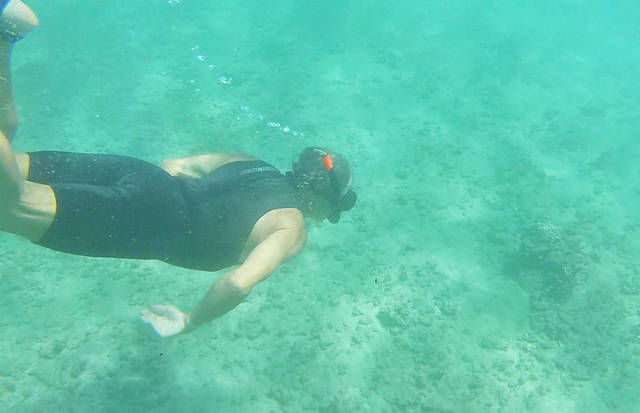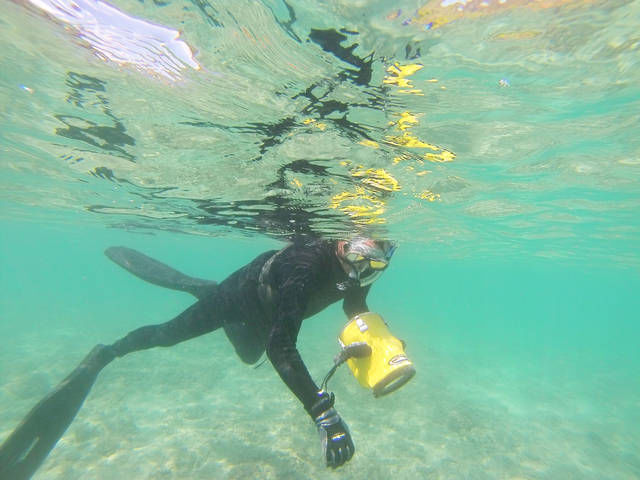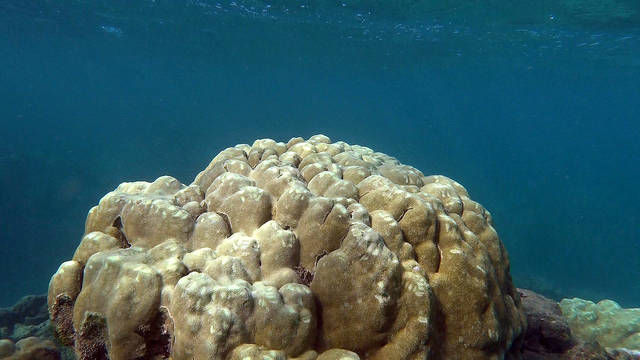Tom Woods couldn’t believe his eyes when he went to check on the sick and dead coral he’d been monitoring at Anini Beach on Kauai’s North Shore.
There were new corals intermingled with the existing reef that he has been monitoring through ReefGuardians Hawaii, along with Robin Mazor.
“Next time we went out we said, ‘does it seem like there’s more than last time?’,” he said. “We’re in there about once a week and my god, this is amazing.”
The moment Mazor and Woods saw changes in the coral cover they called Terry Lilley, of Hanalei, who has been monitoring the reefs around Kauai and taking extensive footage, documenting their health.
He said he’s seeing the same thing happen all over the North Shore, particularly at Waipa where the reef was nearly decimated between the bleaching events in 2014 and 2015 and black band disease that swept the reefs around the same time.
At Waipa, Lilley said the area was covered in blue rice coral in 2012 and had an average of 30 to 40 percent coral cover.
By 2015, Lilley documented 1 percent coral cover at Waipa and this year the coral cover is back to between 10 and 20 percent.
“From Ke’e to Kilauea, this entire coastline has this kind of coral growth,” Lilley said.
Lilley theorizes that it’s a change in military activities in waters around the areas where coral is growing back that’s allowing for new growth.
He says changes in electromagnetic frequencies of military microwave towers and the beginning of an underwater electronic pulse surveillance system in 2012 created electromagnetic radiation that harms the coral.
But, leaders at Kauai’s Pacific Missile Range Facility say that theory “defies the laws of physics,” because electromagnetic radiation doesn’t travel well through water.
“I have a bachelor’s degree in physics and the wavelength of microwaves, that’s the reason you don’t get cell service underwater,” said Capt. Vincent Johnson, head of PMRF.
Climate change, ocean acidification, overfishing and pollutants all have had their hand in impacting the reef, and some say compounds in sunscreen from ocean users could be factoring into the problem as well.
It’s a chemical that John Fauth, a biology professor at the University of Central Florida in Orlando, dubbed harmful to the reef.
In a study published in the journal Archives of Environmental Contamination and Toxicology, where he did toxicology studies to see the effects of the chemical on coral, he says he found it causes their exoskeletons to turn white.
It can also damage the adult corals’ DNA, the study found, and can deform baby corals.
With the amount of sunscreen that beachgoers use in Hawaii, it could have an effect on coral health, but not everyone agrees with the theory.
Dan Knorr, who developed a “reef-safe” sunscreen containing oxybenzone, president of Tropical Seas in Orlando Beach, Florida, says the studies that condemn the chemical didn’t use “realistic ocean conditions.”
“It’s not about the ingredients, but how the ingredients are processed that makes our formulas safe for our skin as well as our ocean and its inhabitants,” Knorr said.
The University of South Florida study used the chemical DMSO (dimethyl sulfoxide) to solubilize oxybenzone, which is another problem, in Knorr’s opinion.
“Reef Safe does not utilize DMSO in our formulas, nor is DMSO naturally occurring in the ocean,” he said. “Furthermore, oxybenzone is not water soluble.”
While oxybenzone’s effects on the reefs are being debated, the Hawaii Legislature is considering a ban and labeling requirements for sunscreens and personal care products that containing the chemical.
On Kauai, marine biologist Carl Berg said he doesn’t think oxybenzone is the most pressing problem when it comes to direct human contact.
A bigger issue is what he calls the danger of people loving the reefs to death.
“I don’t think oxybenzone is as bad of a problem as people stepping on the corals,” Berg said.
Whatever the factors and inputs that are affecting the health of the reefs are at play, a glimmer of hope seems to be shining through in some spots, for instance, in Hanalei Bay.
Eric Brown, a marine ecologist with the National Parks Service, is analyzing data from that location recorded in 2016.
“There is definitely new coral growth occurring as well as the addition of new recruits,” Brown said. “But, until I finish analyzing the 2016 data, (I won’t know) if the new growth exceeds the mortality in Hanalei Bay.”







